Western Ironweed
Western Ironweed, Baldwin's Ironweed
Vernonia baldwinii Torr.
Asteraceae (Sunflower Family)
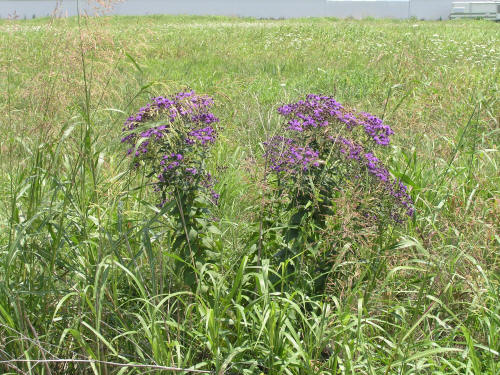
▲ ▼ mature, flowering plants
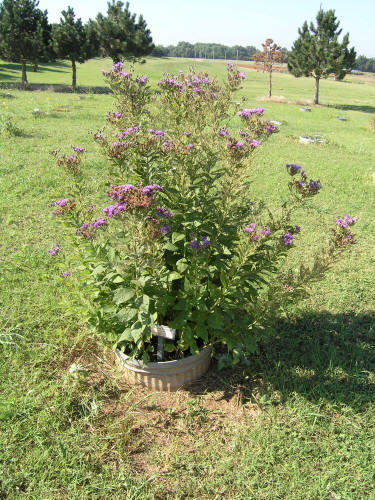

▲ ▼ flowers
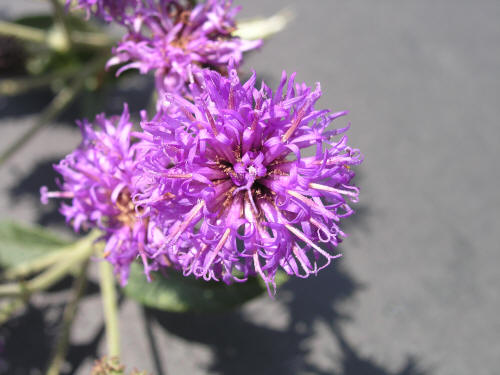
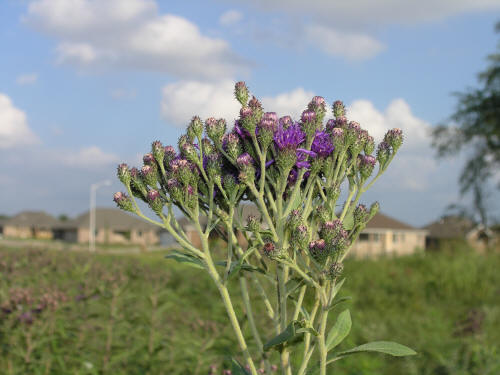
▲ ▼ inflorescence bracts, showing out-curved tips

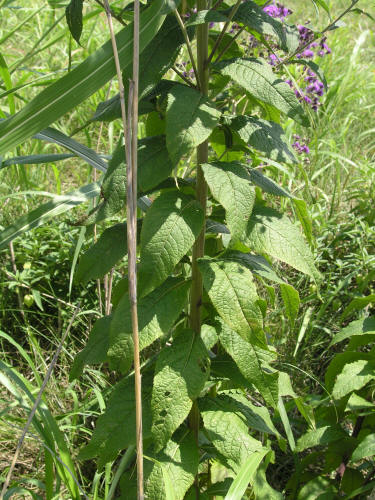
▲ ▼ stem and leaves

▲ ▼ leaf upper and lower surfaces

Western Ironweed, Baldwin's Ironweed:
- One species in a group of native, simple perennial weeds with bright purple flowers
- Can distinguish between species by the differing bracts surrounding purplish head
inflorescences and
leaf/stem characteristics--in Missouri, have 3-4 species that are widely found:
- Western Ironweed, Baldwin's Ironweed (Vernonia baldwinii) has pointed-tipped bracts that curve out from the flowering heads at their tips; both leaf surfaces hairy, undersides more so
- Prairie Ironweed, Smooth Ironweed (Vernonia fasciculata) has pointed tip, purple edged bracts without obvious midvein; leaves are generally hairless
- Tall Ironweed (Vernonia gigantea) has a fringe of hairs around oval bracts on flowering heads, an almost always deep purple stems; leaves are finely hairy on the underside; flower heads have flower flowers/head (13-30) compared to other species
- Arkansas Ironweed, Great Ironweed (Vernonia arkansana) has long, linear, leafy bracts that stand out from the heads; flower heads may be over 1 inch diameter and usually have fewer flower heads perplant than other species, and slightly broader leaves; this one is more common in moist, open woods, riparian areas, and not considered a weed
- Missouri Ironweed (Vernonia missourica) appears similar to Baldwin's Ironweed with large, leaves with hairs on both surfaces, but inflorescences have bracts with pointed or rounded tips, and purple or green midvein, without a lot of hairs on he bracts
- Most ironweed species in midwest have tall, strong, unbranched stems (2-8 feet tall), topped with open branching with clusters of small (1/4 to 1/2 inch diameter) purple head-type flowers
- Leaves are long, lanceolate, with tiny teeth on the margins
- Usually in pastures, abandoned fields, wetland areas
- Cattle do not prefer the wiry ironweed stems, so these plants tend to multiply in overgrazed areas
- Ironweed Control
- Mowing, cutting, proper grazing, tilling
- Chemical control mainly postemergent herbicides